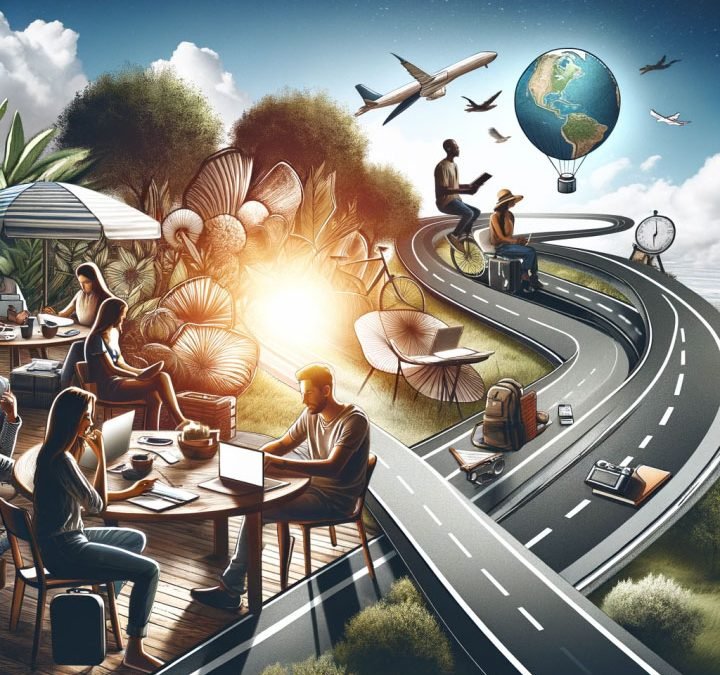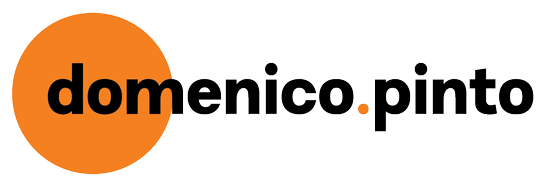
Crossroads of Change: Navigating Life, Work, and Wanderlust
Disclaimer
This edition of my newsletter is going to be quite personal. Buckle up and sit tight; it’s going to be real, raw, and full of personal stuff… You are in for quite a ride….
Foreword
As some of you already know, I joined the MINOMA ← Borderless Retreat Festival a few weeks ago. Over the years, I have become more selective about the events I join. My mantra is to only join a few that align with my values and journey. If I accept an invitation, it means that I am fully invested and ready to be there fully, joining and participating in sessions from other speakers, as well as going the extra mile for my own session. Big thanks to the team at Minoma for putting together such a great festival, especially Maris Kohv, Kasia Peleszuk and Marta Golasz.
Let’s dig in…
…As I mingled among the vibrant energy of the festival, I found myself zoning in and zoning out. Sometimes my mind just wandered off. It’s not common for events to blow me away and get my mind racing at 200 miles an hour. Nor is it common for them to equally relax me and slow me down, relaxing me so much that I can be idle and truly present. I had a few deep conversations about personal growth and found myself reflecting on it profoundly. And with that came a few realizations…
It’s astounding to realize how much I’ve evolved over the last few years, a transformation so significant that even I sometimes find it hard to reconcile with the person I was only three years ago. This journey of self-discovery was a recurring theme in my discussions with peers, each conversation adding another layer to my understanding of this incredible metamorphosis.
I was suddenly transported to a recurring conversation, well, banter maybe, that I have with one of my peers, Michelle Maree, who got to know me at the beginning of this journey. She often shares her amusement at my transformation. “You were so neutral when I met you,” she says with a laugh, highlighting the stark contrast between my past and present self. Living as a nomad, constantly on the move, I’ve seen not only my own growth but also that of those around me. Meeting fellow travelers at the festival, I saw reflections of my former self in them, witnessing their own paths of change and growth. I realized that while I am now more advanced in my journey, I am starting to see other people going through their journeys or even (strangely, surprisingly) looking up to me as they are ready to embark on theirs. Just like at the beginning of my journey, I looked up to Nomads who had already been on this journey a little bit longer than me.
One of the big misconceptions about the nomadic lifestyle is that it is quite superficial, as you move from one place to another, sometimes without spending too much time integrating into the communities. I think you couldn’t be more wrong with this assumption. Of course, you can go through all the countries in the world, collecting “stamps”. But that is really tiring and rather the exception. You can equally find that by staying your whole life in your place of birth.
What if the opposite could be true? What if having a nomadic lifestyle allows you to seek more deep-level conversations? What if it could be a way of accelerating your path? So many conversations inspired me, and I already know I won’t be able to fit them all in this “entry”; I might need a few more. One of those conversations was with my peer, Piotr Ciepiel, talking about vulnerability and showing your true self.
Suddenly the penny dropped! If I look up to people and people look up to me, we are all role models! We all have the ability to inspire others. But with that comes great responsibility. Reflecting on this journey, I realized a critical aspect: I hadn’t allowed people, even those closest to me, to see me struggle or to help during my toughest times. It was a turning point, transporting me back to what probably was the most challenging period in my life, three years ago, a time of profound loneliness and internal struggle. I felt trapped in a societal mold, unable to express my vulnerabilities to anyone—family, friends, or even strangers. This self-imposed isolation was a result of societal expectations and personal pride, convincing me to maintain a facade of strength and stoicism. I have always considered myself blessed for the family and people I had around me. Many great people. People who inspired me, that encouraged me, yet, I didn’t turn to them for help. Even worse, I didn’t even allow them to see me hurting. If you go back to that time, all you would find on social media would be posts of me being happy and sharing stories of client engagements or success stories. None of my struggles.
I was fortunate enough to find myself in environments with the right people who unknowingly were there for me when I needed it the most. In my book, The Great Shift, I talk about the impact that the environments we are in can have on us. When I started this journey, I was lost. I knew I was looking for something, but I didn’t quite know what I was looking for. I have always been driven and curious, hungry to learn. My “jam” is high performance. Helping individuals and organizations get there without compromising work-life balance. Quite the contrary, getting there by enhancing and optimizing work-life harmony.
Contrary to what some may think, my conversations about high performance often focus significantly on mental health and relationships. These aspects are frequently overlooked or undervalued by others, yet they are critical to true high performance. The link between mental health, relationships, and performance is undeniable and a connection that my research and experiences continually reinforce. Addressing these issues has been a cornerstone of my personal growth journey, leading to remarkable progress.
The nomadic lifestyle has been a crucial element of this growth. Frequently (enough) changing environments and meeting new people offer opportunities to reset and align with those who share or inspire my desired mindset. Each location brings its own set of experiences and lessons, from the sun-kissed island of Madeira, through the quaint streets of Bansko, all the way to buzzing Tirana. These festivals and encounters have been chapters in my story of growth, allowing me to forge deep connections and learn from every person I meet.
My growth in these three years has been exponential compared to the decade before. It’s a testament to the power of the environment and the people we choose to surround ourselves with. Adopting a nomadic lifestyle can be transformative for those seeking change or personal development. It’s about integrating work and life in a way that fosters continuous learning and personal development. This lifestyle has reshaped my understanding of growth, relationships, and mental well-being.
As I continue this journey, I’m reminded of the importance of being open to new experiences and learning from them. Whether it’s an insightful conversation with a fellow traveler or a quiet moment of reflection in the desert, each experience adds a layer to my understanding of the world and myself. This nomadic life is more than a series of destinations; it’s a journey of continuous growth and self-discovery.
One of the greatest realizations I’ve had is the importance of choosing the right people to surround myself with. Today, I consciously seek to be around those aligned with my future vision and journey, rather than those tied to my past. This selection of company has been instrumental in my development, allowing me to draw inspiration and learn from those who embody the qualities and values I aspire to. People that challenge my way of thinking. Don’t get me wrong, I still curate relationships with people that I have met longer than three years ago. Some of them are still my role models today and are amongst the most amazing people I know.
At the same time, this lifestyle offers the unique opportunity to meet a diverse array of individuals, each bringing their own perspectives and experiences. At each festival or gathering, I find myself connecting with new people. Each festival brings in a different tribe, and some tribes overlap. The Minoma Tribe is my choice when it comes to mindfulness (disclaimer, I am a fan). They bring in something unique in that aspect, being able to curate their programs in a way that brings in something fresh and unexpected. I always meet new people or have the chance to get to know someone at a deeper level. This festival was no exception to that. Is it possible that going through true experiences together, and sharing moments of growth, creates a unique bond? Is there someone in your life who will always have a special place because of a shared experience? There is no surprise that some people become integral parts of my ongoing journey. It’s a continual process of discovery, growth, and connection.
Embracing a nomadic lifestyle has not only been about geographical movement but also about mental and emotional growth. It’s a lifestyle that challenges me to rethink my assumptions, push my boundaries, and continuously evolve. The experiences and relationships forged along this path have been invaluable, fueling my growth in ways I never imagined.
Lastly, my reflections on high performance have shifted dramatically since I started embracing what some may call the ‘fluffy stuff’ – the softer, more introspective aspects of life. By reevaluating productivity and adopting new techniques learned through events like the Minoma Festival, I’ve reached new heights in my performance. This transformation has been astonishing. Just consider the past couple of days: the volume of work I’ve accomplished would have previously taken me ten days. This surge in creativity, focus, and sharpness is directly linked to the holistic approach I’ve adopted towards life.
Even in my physical workouts, I’ve noticed a remarkable increase in intensity. Today, I had my first major session after a two-week period of intense mental and physical self-care, part of my ongoing journey in health, nutrition, and mindset. It comes as no surprise to me that I’ve been able to push myself approximately 22% harder during my workout, despite not having trained my body in 2 weeks. The correlation between my mental state, inner work, and physical performance is undeniable. While achieving so much professionally, I’ve also managed to balance time with loved ones, engage in physical activities, and maintain a sense of fulfillment. This balance underscores a vital lesson: our mental state, relationships, and self-care are not just auxiliary elements of our lives; they are foundational to our happiness and high performance, especially during challenging times.
As I look to the future, I’m excited about the continued journey of self-discovery, growth, and the new connections that await. For me, the nomadic lifestyle isn’t just a choice; it’s a pathway to a richer, more fulfilling life, and I’m grateful for every moment of it. A fellow nomad, Federico Violante, once said, “If we keep bumping into each other without planning it, there must be a reason…” This sentiment resonates deeply with me. I couldn’t be more excited to be inspired by the growth of my peers while also sharing my learnings through sessions like those at festivals.
I’ll leave you with a question: If the “original nomad” adopted the nomadic lifestyle in search of game, plants, water, and better climatic conditions, is it possible that the “modern nomad” has adopted this lifestyle to accelerate personal growth?
Enough food for thought for today…
Yours,
Domenico
P.S. Yes, I am planning to join the 2024 Minoma Festival. See you there?





